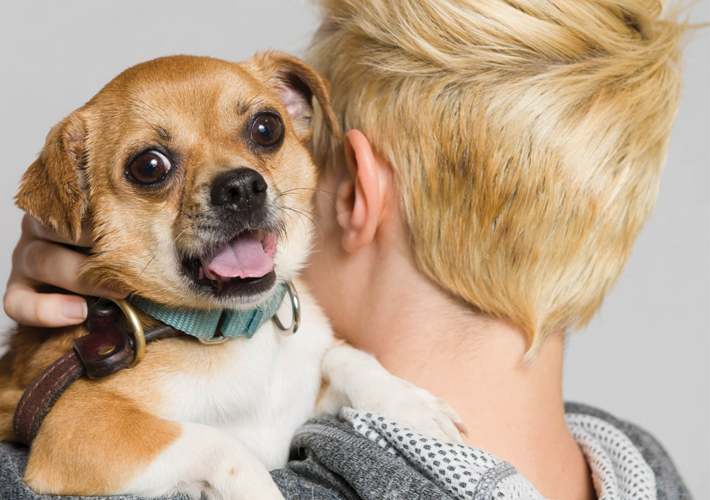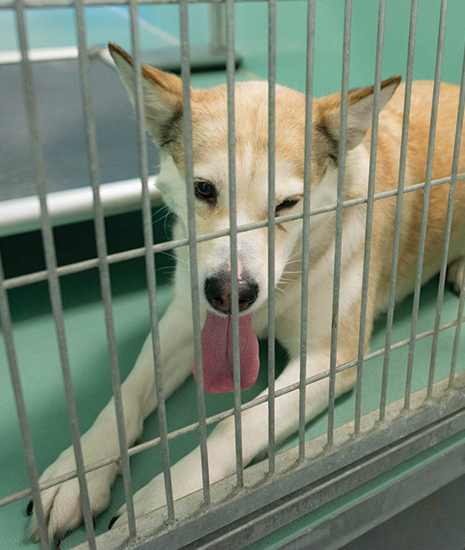
Getting Your Dog Back
Dogs are required to be constrained on a leash when not on their owner’s property. But dogs are clever escape artists and have a way of going out for some exploration. Here is what to do if your dog is missing:
- Call the Schuyler County Sheriff’s office at 607-535-8222 and provide a contact number, a description of the dog, and the last known location for the dog.
- Call the Humane Society of Schuyler County at 607-594-2255 and provide the same information. If your dog is already in our custody, we will get back to you as soon as possible. If we don’t have your dog in custody, we will post the description and last known location on our Facebook page in case our Friends spot your dog (they often do).
- If your dog turns up, please call the Sheriff’s office and the Humane Society to let us know we can call off the search.

Redeeming Your Dog From Custody
Dogs roaming free may be apprehended by the Sheriff’s Office Animal Control Officer, a Sheriff’s Deputy, or a Village Police Officer. They are brought to the shelter and checked for injuries and signs of neglect and they are scanned for a microchip.
The Humane Society is required to hold them for five days after which they become property of the Humane Society. They are fed, exercised if possible, and treated for urgent medical conditions. Information about their apprehension is posted on our web site and Facebook site.
To redeem your dog, you will need to provide several documents under New York State Ag and Markets Law Article 7:
- A current dog license if you are a resident of Schuyler County. If your dog does not have a license or you cannot provide documentation, the Humane Society is deputized to collect the license information and fees on behalf of Schuyler County’s towns and villages.
- A current rabies vaccination certificate. This is required by law for all dogs leaving the shelter. If your dog is not vaccinated or you do not have the rabies certificate, the Humane Society can arrange to have your dog transported to a local veterinarian and vaccinated. Note that most veterinary offices are closed on Saturday afternoons and Sundays.
A redemption fee will be assessed starting at $10 for the first offense. Thereafter, the fee escalates by $10 per offense for all offenses in the past calendar year. Fees are also assessed for daily care, any required medical procedures, and transportation to and from veterinary offices.
Tips on Recovering Your Dog
- Get an identification tag and attach it to your dog’s collar. These are available from Wal-Mart or can be ordered online by companies such as GoTags. The tag should contain your name, cell phone number, and home address.
- Have a microchip implanted in your dog. These devices are about the size of a grain of rice and are implanted by a veterinarian. They are placed under the loose skin on the dog’s back. The chip responds to a scanner by returning a 15-digit code number and the code number is used to look up the dog in an international database which provides ownership information and other useful information. Most shelters routinely scan dogs coming in and the chip and database entry provides solid proof of ownership and contact information, even if the dog has lost his collar. Most microchip vendors also provide a collar tag with the chip number in case a scanner is not available. Many countries outside the United States require pets to have chips to enter the country.
- Be sure the information on the ID tag and the information in the chip database are current. This is especially important as people drop their landlines and use only cell phones. If you move to a new address, it is important to get a new ID tag and to update the information in the chip database.
- Rabies tags are not good for identification. They require finding out who issued the rabies shot and then having that entity look up the number. Record keeping isn’t reliable enough to count on for identification. Your dog is much better off with an implanted chip and a collar tag. Attaching rabies tags is important to assure finders and authorities that your dog is vaccinated

If You Travel with Your Dog
If you are traveling with your dog, here are a few suggestions on helping you get your dog back while away from home.
- Always keep your dog on a leash from the time he leaves your car. New places can be very exciting and your dog can be off and running in an instant.
- Make sure your dog is wearing his identification tags on his collar. If your dog has a chip, make sure the chip tag is also on his collar.
- Bring your dog’s rabies vaccination certificate and license with you or photograph it with your cell phone. This can eliminate a trip home to get the documentation.
